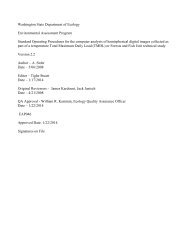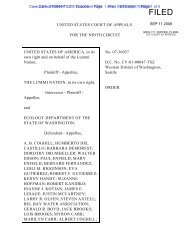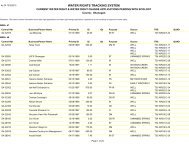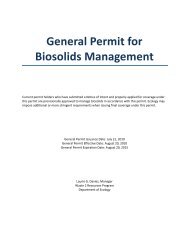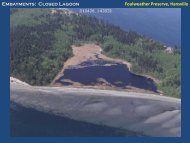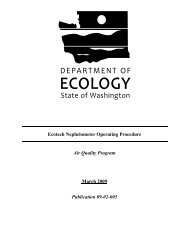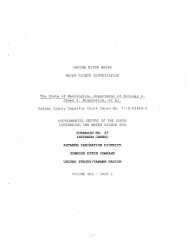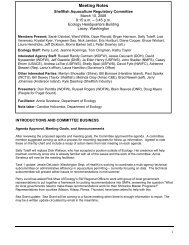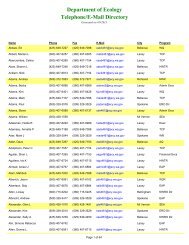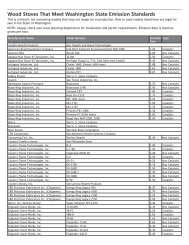Appendix X: User's Guide - Washington State Department of Ecology
Appendix X: User's Guide - Washington State Department of Ecology
Appendix X: User's Guide - Washington State Department of Ecology
Create successful ePaper yourself
Turn your PDF publications into a flip-book with our unique Google optimized e-Paper software.
X.1.a Development Standards for Zone 1<br />
It is intended that new development in Zone 1 will be primarily for the maintenance <strong>of</strong> existing structures, the<br />
restoration or remodeling <strong>of</strong> existing structures within the existing footprint, voluntary restoration activities, or<br />
required mitigation for adverse impacts in Zone 2.<br />
The primary exception to this prohibition on adverse impacts is to develop an access path from Zone 2 to the<br />
line <strong>of</strong> OHWM. This access path should be the minimum size and design to serve this purpose and respect the<br />
safety <strong>of</strong> its intended users. Additional flexibility may be required to meet the needs <strong>of</strong> users with limited<br />
mobility.<br />
X.1.b Development Standards for Zone 2<br />
It is intended that new development in Zone 2 will be primarily for the maintenance <strong>of</strong> existing structures, the<br />
restoration or remodeling <strong>of</strong> existing structures within the existing footprint, or for voluntary restoration<br />
activities. However new developments that result in adverse impacts, for example a modest expansion <strong>of</strong> an<br />
existing structure, may occur so long as these impacts are mitigated to achieve no net loss. It is likely that<br />
successful mitigation will be more easily achieved in Zone 1 but it is also possible to mitigate adverse impacts<br />
by improvements in Zone 2.<br />
X.1.c Additional considerations<br />
BMC 20.30.030 (2.f) and BMC 20.30.070 (2.e) limit new shoreline development that require the need for<br />
shoreline stabilization and structural hazard reduction measures for the life <strong>of</strong> the development. This regulation<br />
must be considered if the development requires the installation <strong>of</strong>, or the expansion <strong>of</strong>, structures for flood<br />
hazard reduction or shoreline stabilization.<br />
X.2 Mitigation Sequencing<br />
Consistent with WAC 173-26-201(2.e) it is necessary that, where required, mitigation measures shall be applied<br />
in the following sequence <strong>of</strong> steps listed in order <strong>of</strong> priority, with (A) <strong>of</strong> this subsection being top priority.<br />
Avoiding the impact altogether by not taking a certain action or parts <strong>of</strong> an action;<br />
Minimizing impacts by limiting the degree or magnitude <strong>of</strong> the action and its implementation by using<br />
appropriate technology or by taking affirmative steps to avoid or reduce impacts;<br />
Rectifying the impact by repairing, rehabilitating, or restoring the affected environment;<br />
Reducing or eliminating the impact over time by preservation and maintenance operations;<br />
Compensating for the impact by replacing, enhancing, or providing substitute resources or environments; and<br />
Monitoring the impact and the compensation projects and taking appropriate corrective measures.<br />
User’s <strong>Guide</strong> - 2 - 04/10/2013



